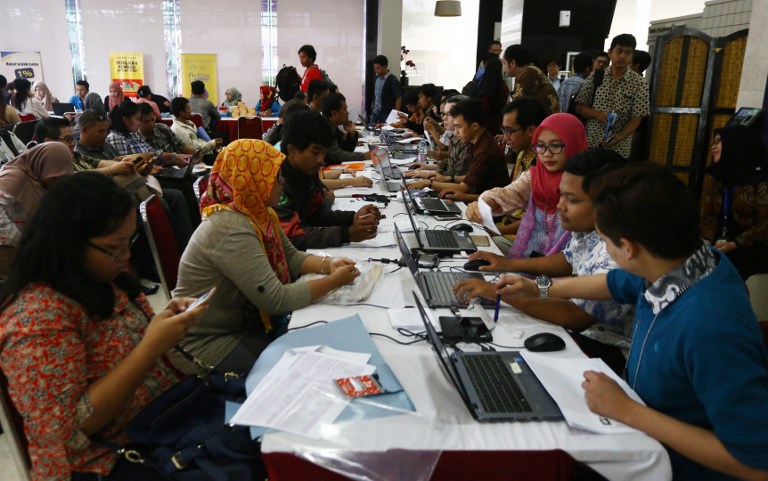Indonesia: Commentary: Indonesia’s tax amnesty enters its third phase with good results so far
Indonesia has so far seen more than 600,000 taxpayers join its tax amnesty programme, generating US$8 billion from the first two phases of the programme.
Indonesia has entered the third phase of its tax amnesty programme, which was first launched in July 2016 to boost the country’s meagre revenue by collecting previously unreported funds hidden by wealthy citizens abroad and at home.
The country, which has long struggled to increase its tax revenue, has so far seen more than 600,000 taxpayers join the scheme, generating US$8 billion from the first two phases of the programme.
The first phase, which ended in October last year, exceeded expectations by generating around US$7 billion or two-thirds of the revenue target. The second reporting period ended on Dec 31, 2016, and generated the much smaller amount of US$1 billion.
Some 27,000 new taxpayers have registered since the roll-out of the programme. And while it remains to be seen whether Indonesia will reach its tax amnesty target of US$12.4 billion by the end of the third phase in March, the success of the first phase prompted financial observers to hail it as one of the most successful in the world.
BEATING EXPECTATIONS
Many, including the IMF, were initially sceptical about Indonesia’s chance of generating significant revenue from the amnesty. But the take-up of the programme has dispelled doubts.
The revenue that Indonesia has generated from it is significantly higher than similar programmes that have been implemented in other countries, such as India, Greece, Germany, and Canada.
One of the factors that attracted many Indonesians to report their assets is the low tax rate of the program. In the first round, the government only charged 2 per cent tax on total reported financial assets inside Indonesia and 4 per cent for assets abroad. The rate increases incrementally in subsequent phases, reaching ten per cent for offshore assets by the third period.
The OECD has criticised Indonesia’s low rates as it deemed them too generous towards tax evaders. In September, thousands of union workers in Jakarta protested against the tax amnesty scheme, lamenting that it pardons wealthy tax cheaters.
But the local finance ministry believes the low rates were the driving factor for the high uptake of the program.
ADDED INCENTIVES
The Indonesian government disregards the origins of the funds being reported on to ensure taxpayers take advantage of the scheme. And it ignores prior false reporting of total assets and promises confidentiality for those who participate in the amnesty programme.

The first phase of the programme exceeded expectations by generating around US$7b or two-thirds of the revenue target. (Photo: AFP)
But some rich businessmen such as CEO of Lippo Group James Riady have openly declared their participation and called for others to report their assets too.
Indonesia’s tax amnesty programme is well-timed. By September 2017, the country will start exchanging tax information with others that are part of the OECD’s Automatic Exchange of Information initiative. This means the country will start receiving information about offshore assets owned by its residents from tax jurisdictions that are part of the initiative. As of July 2016, 101 tax jurisdictions had signed up to the programme.
The initiative will mean that tax avoiders will find it hard to hide their financial information from authorities because banks would not be allowed to hide information about their non-resident customers.
THE FINAL PERIOD
Entering the third period, finance minister Sri Mulyani expects small and medium businesses to provide a significant contribution to tax revenue.
While most of those taking advantage of the first phase of tax amnesty were wealthy tycoons with offshore assets, some 70 per cent of taxpayers reporting in the second period of the tax amnesty were small and medium businesses.
These businesses contribute nearly US$196 billion or 55.6 per cent to Indonesia’s GDP but revenue generated from the second phase was ten times less than the first phase.
The programme’s success thus depends on this last round of reporting. The finance minister should work with the Ministry of Cooperatives and Small and Medium Enterprises to get the list of businesses and require them to report their assets.
WIDENING THE TAX BASE
The success of the tax amnesty programme so far is a welcome attempt to increase Indonesia’s tax revenue. But if Indonesia really wants to increase its tax income, it must find a way to aggressively widen its tax base.
Indonesia has a population of around 260 million people but only 26 million are registered as taxpayers. This low number has contributed to the country’s budget deficit, expected to reach US$25 billion in 2017 or about 2.41 per cent of total GDP.
The government still has a lot of work to do to educate society regarding tax compliance. One of the things it could do is connect tax compliance with moral and religious concepts – religion plays an important part in Indonesian society. Religiosity might influence people’s habits, and might make individuals reluctant to engage in tax evasion.
Research has found a positive relationship between tax morale and religion in Spain and the United States, and it could function similarly in Indonesia.
This article first appeared in The Conversation. Co-author Nurhastuty Wardhani is a PHD candidate at Queensland University of Technology and a lecturer in Accountancy and Islamic Finance at Trisakti University. Co-author Asmiati Malik is a doctoral reseacher at the University of Birmingham. Read the original report here.
Source: http://www.channelnewsasia.com/news/asiapacific/commentary-indonesia-s-tax-amnesty-enters-its-third-phase-with/3480386.html


 Thailand
Thailand




